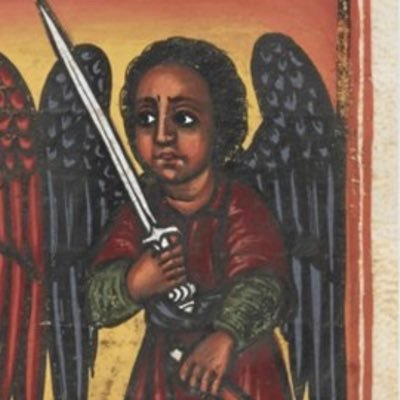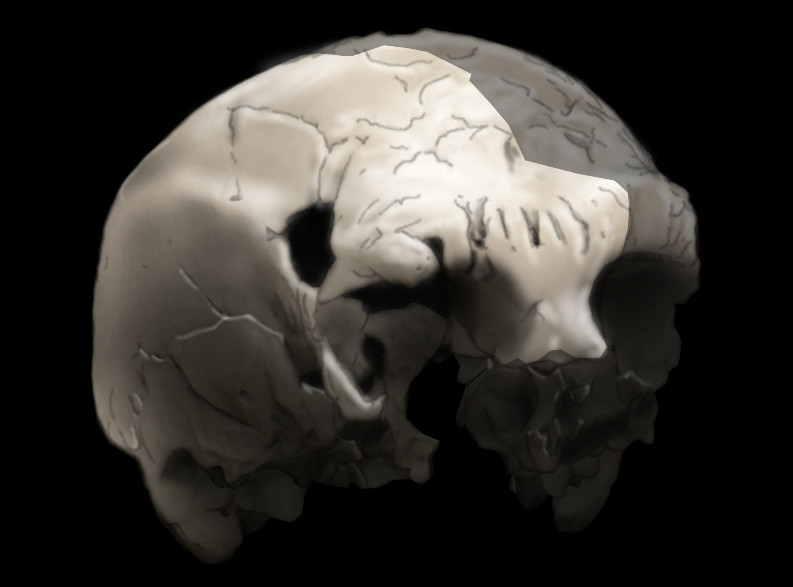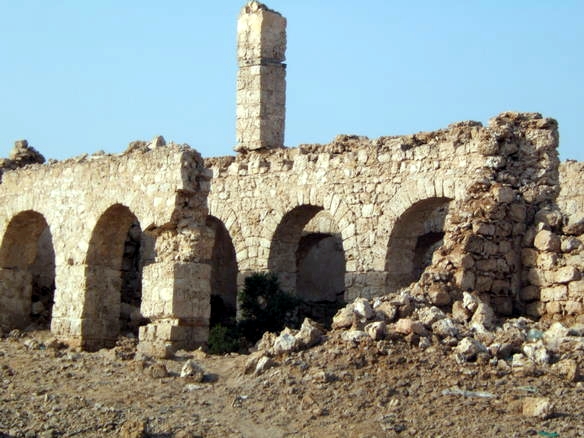|
Enbaqom
Abba 'Ěnbāqom (c.1470 – c.1565) was a religious leader of the Ethiopian Orthodox Tewahedo Church, and translator and author, e.g., of the ''Anqaṣa Amin''. As Abbot at the leading monastery of Debre Libanos he became the Echage, the second highest ecclesiastical office, as well as head of all Ethiopian monasteries, and was often regarded as the most influential person in the Ethiopian Church. Life and views 'Ěnbāqom was the baptismal name of the former Abu'l Fatḥ, who circa 1489 had immigrated from Muslim Yemen into Christian Ethiopia. His father was said to have been nobility, his mother Jewish. He arrived as a merchant trader, in the company of a returning Ethiopian who had been held captive in Yemen. Already 'Ěnbāqom was intensely involved in questioning his religious affiliation. Eventually, after much reading and discussion, he decided to convert and become a Christian. His teacher Petros, then Echage or Abbot of the leading Ethiopian monastery at Debre Libanos ... [...More Info...] [...Related Items...] OR: [Wikipedia] [Google] [Baidu] |
Ethiopian Orthodox Tewahedo Church
The Ethiopian Orthodox Tewahedo Church ( am, የኢትዮጵያ ኦርቶዶክስ ተዋሕዶ ቤተ ክርስቲያን, ''Yäityop'ya ortodoks täwahedo bétäkrestyan'') is the largest of the Oriental Orthodox Churches. One of the few Christian churches in sub-Saharan Africa originating before European colonization of the continent, the Ethiopian Orthodox Tewahedo Church dates back to the acceptance of Christianity by the Kingdom of Aksum in 330, and has between 36 million and 49.8 million adherents in Ethiopia. It is a founding member of the World Council of Churches. The Ethiopian Orthodox Tewahedo Church is in Communion (Christian), communion with the other Oriental Orthodox churches (the Eritrean Orthodox Tewahedo Church, the Coptic Orthodox Church of Alexandria, the Malankara Orthodox Syrian Church, the Armenian Apostolic Church, and the Syriac Orthodox Church). The Ethiopian Orthodox Tewahedo Church had been administratively part of the Coptic Orthodox Church of Alexan ... [...More Info...] [...Related Items...] OR: [Wikipedia] [Google] [Baidu] |
Copt
Copts ( cop, ⲛⲓⲣⲉⲙⲛ̀ⲭⲏⲙⲓ ; ar, الْقِبْط ) are a Christians, Christian ethnoreligious group indigenous to North Africa who have primarily inhabited the area of modern Egypt and Sudan since Ancient history, antiquity. Most ethnic Copts are Coptic Orthodox Church, Coptic Oriental Orthodox Christians. They are the largest Christianity in Egypt, Christian denomination in Egypt and the Christianity in the Middle East, Middle East, as well as Christianity in Sudan, in Sudan and Christianity in Libya, Libya. Copts have historically spoken the Coptic language, a direct descendant of the Demotic (Egyptian), Demotic Egyptian that was spoken in late antiquity. Originally referring to Ancient Egypt, all Egyptians at first, the term ''Copt'' became synonymous with native Christians in light of Islamization of Egypt, Egypt's Islamization and Arabization after the Muslim conquest of Egypt in the 7th century. Copts in Egypt account for roughly 5–20 percent of th ... [...More Info...] [...Related Items...] OR: [Wikipedia] [Google] [Baidu] |
Gafat People
The Gafat (Amharic: ጋፋት) are an extinct ethnic group that once inhabited present day western Ethiopia. They spoke the Gafat language, an extinct South Ethiopic grouping within the Semitic subfamily of the Afroasiatic languages and closely related to Harari and Eastern Gurage languages. According to Alleqa Taye, in the year 1922 Gafat was only spoken privately in Gojjam due to the Amhara designating them outcasts. Etymology A few linguists have postulated Gafat is an extract from the root Harari term ''Gáfá'' meaning slave. History Gafat was located just within the kingdom of Damot to the north upper Gibe River and bordered directly on southern bank of the Blue Nile. Like near by Damot, Gafat is reported in the Gedle Yared to have come under Zagwe rule in the 12th century and Tekle Haymanot accomplished his mission as well. Gafat on both side of the Nile appeared to have kept them in great numbers. The thirteenth century Amhara rebel leader Yekuno Amlak was suppor ... [...More Info...] [...Related Items...] OR: [Wikipedia] [Google] [Baidu] |
Gelawdewos Of Ethiopia
Galawdewos ( gez, ገላውዴዎስ, 1521/1522 – 23 March 1559) also known as Mar Gelawdewos ( amh, ማር ገላውዴዎስ), was Emperor of Ethiopia from 3 September 1540 until his death in 1559, and a member of the Solomonic dynasty. His throne name was Asnaf Sagad I (Ge'ez: አጽናፍ ሰገድ). A male line descendant of medieval Amhara kings, he was a younger son of Dawit II and Seble Wongel. Reign His reign was dominated by the struggle with Ahmad ibn Ibrahim al-Ghazi during the Ethiopian–Adal War until Ahmad's defeat and death in the Battle of Wayna Daga on 21 February 1543. Gelawdewos devoted time and energy to rallying his people against Ahmad, a determination his chronicler credits prevented Ahmad's forcible conversions from being permanent. With Ahmad's death, Gelawdewos was not only able to eject the leaderless Muslim forces from the Ethiopian Highlands, but also from the lowlands to the east, which included the Sultanate of Dawaro and Bale. He also turne ... [...More Info...] [...Related Items...] OR: [Wikipedia] [Google] [Baidu] |
Arquebusiers
An arquebus ( ) is a form of long gun that appeared in Europe and the Ottoman Empire during the 15th century. An infantryman armed with an arquebus is called an arquebusier. Although the term ''arquebus'', derived from the Dutch word ''Haakbus'' ("hook gun"), was applied to many different forms of firearms from the 15th to 17th centuries, it originally referred to "a hand-gun with a hook-like projection or lug on its under surface, useful for steadying it against battlements or other objects when firing". These "hook guns" were in their earliest forms of defensive weapons mounted on German city walls in the early 15th century. The addition of a shoulder stock, priming pan, and matchlock mechanism in the late 15th century turned the arquebus into a handheld firearm and also the first firearm equipped with a trigger. The exact dating of the matchlock's appearance is disputed. It could have appeared in the Ottoman Empire as early as 1465 and in Europe a little before 1475. The he ... [...More Info...] [...Related Items...] OR: [Wikipedia] [Google] [Baidu] |
History Of Portugal (1415-1542)
The history of Portugal can be traced from circa 400,000 years ago, when the region of present-day Portugal was inhabited by Homo heidelbergensis. The Roman invasion in the 3rd century BC lasted several centuries, and developed the Roman provinces of Lusitania in the south and Gallaecia in the north. Following the fall of Rome, Germanic tribes controlled the territory between the 5th and 8th centuries, including the Kingdom of the Suebi centred in Braga and the Visigothic Kingdom in the south. The 711–716 invasion by the Islamic Umayyad Caliphate conquered the Visigoth Kingdom and founded the Islamic State of Al-Andalus, gradually advancing through Iberia. In 1095, Portugal broke away from the Kingdom of Galicia. Henry's son Afonso Henriques proclaimed himself king of Portugal in 1139. The Algarve (the southernmost province in Portugal) conquered from the Moors in 1249, and in 1255 Lisbon became the capital. Portugal's land boundaries have remained almost unchanged since then. ... [...More Info...] [...Related Items...] OR: [Wikipedia] [Google] [Baidu] |
Ottomans
The Ottoman Turks ( tr, Osmanlı Türkleri), were the Turkic founding and sociopolitically the most dominant ethnic group of the Ottoman Empire ( 1299/1302–1922). Reliable information about the early history of Ottoman Turks remains scarce, but they take their Turkish name, ''Osmanlı'' ("Osman" became altered in some European languages as "Ottoman"), from the house of Osman I (reigned 1299–1326), the founder of the House of Osman, the ruling dynasty of the Ottoman Empire for its entire 624 years. Expanding from its base in Söğüt, the Ottoman principality began incorporating other Turkish-speaking Muslims and non-Turkish Christians. Crossing into Europe from the 1350s, coming to dominate the Mediterranean Sea and, in 1453, invading Constantinople (the capital city of the Byzantine Empire), the Ottoman Turks blocked all major land routes between Asia and Europe. Western Europeans had to find other ways to trade with the East. Brief history The "Ottomans" first ... [...More Info...] [...Related Items...] OR: [Wikipedia] [Google] [Baidu] |
Ahmad Gran
Ahmad ibn Ibrahim al-Ghazi ( so, Axmed Ibraahim al-Qaasi or Axmed Gurey, Harari: አሕመድ ኢብራሂም አል-ጋዚ, ar, أحمد بن إبراهيم الغازي ; 1506 – 21 February 1543) was an imam and general of the Adal Sultanate. Imam Ahmad (commonly named Ahmed ''Gurey'' ''in Somali, and ''Gura'' in Afar, both meaning "the left-handed" or "the southpaw")'', invaded the Ethiopian Empire under the Sultanate of Adal during the Ethiopian-Adal War. Ethnicity Imam Ahmad is regarded by most scholars as an ethnic Somali. However, a few historians have dismissed the Somali theory. Merid Wolde Aregay argued Ahmed ibn Ibrahim al-Ghazi belonged to the Harla dynasty of rulers through his father. Mohammed Hassan also states Ahmed was the son of Garad Ibrahim, a provincial governor of Sim in Harla realm. According to Taddesse Tamrat, although various Somali clans were involved in the conquest, Ahmed was not a Somali and had links to the Semitic-speaking Wâlasma ar ... [...More Info...] [...Related Items...] OR: [Wikipedia] [Google] [Baidu] |
Awash River
The Awash (sometimes spelled Awaash; Oromo: ''Awaash'', Amharic: አዋሽ, Afar: ''We'ayot'', Somali: ''Webiga Dir'') is a major river of Ethiopia. Its course is entirely contained within the boundaries of Ethiopia and empties into a chain of interconnected lakes that begin with Lake Gargori and end with Lake Abbe (or Abhe Bad) on the border with Djibouti, some 100 kilometres (60 or 70 miles) from the head of the Gulf of Tadjoura. It is the principal stream of an endorheic drainage basin covering parts of the Amhara, Oromia and Somali Regions, as well as the southern half of the Afar Region. The Awash Valley (and especially the Middle Awash) is internationally famous for its high density of hominin fossils, offering unparalleled insight into the early evolution of humans. "Lucy", one of the most famous early hominin fossils, was discovered in the lower Awash Valley. For its paleontological and anthropological importance, the lower valley of the Awash was inscribed on the UN ... [...More Info...] [...Related Items...] OR: [Wikipedia] [Google] [Baidu] |
Lake Tana
Lake Tana ( am, ጣና ሐይቅ, T’ana ḥāyik’i; previously Tsana) is the largest lake in Ethiopia and the source of the Blue Nile. Located in Amhara Region in the north-western Ethiopian Highlands, the lake is approximately long and wide, with a maximum depth of , and an elevation of . Lake Tana is fed by the Gilgel Abay, Reb and Gumara rivers. Its surface area ranges from , depending on season and rainfall. The lake level has been regulated since the construction of the control weir where the lake discharges into the Blue Nile. This controls the flow to the Blue Nile Falls (Tis Abbai) and hydro-power station. In 2015, the Lake Tana region was nominated as a UNESCO Biosphere Reserve recognizing its national and international natural and cultural importance. Overview Lake Tana was formed by volcanic activity, blocking the course of inflowing rivers in the early Pleistocene epoch, about 5 million years ago. The lake was originally much larger than it is today. S ... [...More Info...] [...Related Items...] OR: [Wikipedia] [Google] [Baidu] |
Richard Pankhurst
Richard Marsden Pankhurst (1834 – 5 July 1898) was an English barrister and socialist who was a strong supporter of women's rights. Early life Richard Pankhurst was the son of Henry Francis Pankhurst (1806–1873) and Margaret Marsden (1803–1879). Pankhurst was born in Stoke but spent most of his life in Manchester and London. He was educated at Manchester Grammar School and Owens College of Manchester. In 1858 he graduated B.A. from the University of London and in 1859 was awarded LL.B. with Honours. In 1863 he graduated LL.D. with gold medal. Career He was called to the Bar at Lincoln's Inn in 1867 and joined the Northern Assizes circuit. He was also a member of the Bar of the County Palatine of Lancaster Court. Following qualification he was a founder member of the Manchester Liberal Association, although he was subsequently to fall out with the Liberals. He campaigned for multiple causes, including free speech, universal free secular education, republicanism ... [...More Info...] [...Related Items...] OR: [Wikipedia] [Google] [Baidu] |







